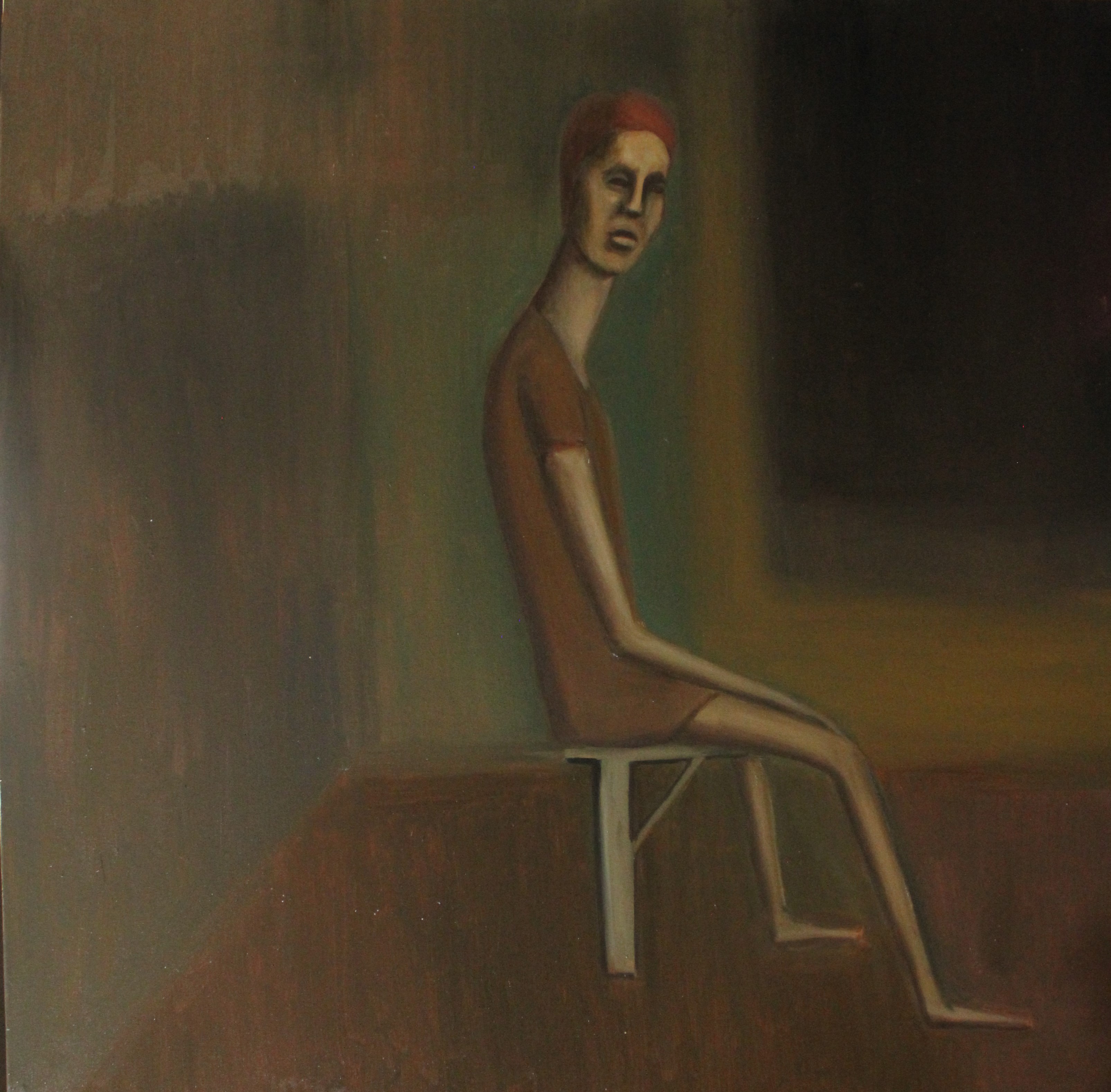Dipesh Nepali’s dark light
A painting that transports the artist and viewer to life’s dark period, and deliverance from it
At first glance, it screams utter sorrow. It projects out-and-out unhappiness of the mind, body and soul, a feeling of having given up on life itself. It is dark, it is lonely, it is sad.
But do not dismiss the painting, give it some time to grow on you. The painting may fleetingly transport viewers to painful periods of their lives, long repressed. Most of us have experienced such 'dark' moments, where we struggled and persevered only to emerge elatedly on the other side.
This painting is the work of 16-year-old Dipesh Nepali who is from a village in Jumla district, in the isolated mountains of north-western Nepal. An ordinary school student, Dipesh has had a difficult life in a harsh environment where food is often scarce, winters are long and dreary, and access to basic healthcare and education is minimal.

In his spare time, after finishing his household chores, Dipesh likes to draw and paint. It is his escape from the daily grind, a chance to express himself and bare his soul.
"Art was my escape from the world, and from myself,” Dipesh told me recently. “It is a way to be truly free from the chains of family and society. It is where the chaos of my mind and soul find rest, art is a medium to bring it all out."
Talking to the young artist in Kathmandu recently helped me understand the written and unwritten rules of society, not least materialism and the desperate search for instant, superficial gratification which ultimately led him to seek solitude, go into hiding, and retreat into himself.
Yet, in his work, Dipesh has retained the curiosity of his childhood, the questioning and seeking, and in doing so he has discovered that art resided within him. It only needed to be kindled gently to become a powerful tool.
At first glance, this painting does not seem to inspire much, it looks ordinary and is not pleasing to the eye, either. But give it time and space to incubate, and it radiates a quiet energy, like an inner applause for a battle won over negative emotions. Proof that the artist has been at a low point in his life, and is back up to show us how it felt.
If we reflect on the painting long enough, it may bring back our own dark moments, reminding some of us of the process of recovery, how we emerged stronger, determined and self-reliant. No matter what our struggle, there is always more ahead to look forward to. But evoking and honouring these memories empowers us to meet adversity head-on and overcome them
Dipesh was confused about himself and about his passion for art. So, he travelled to Kathmandu seeking skill and exposure. Luckily, his older brother was in the city and took care of him.
Read also: IMAGINATION by Uttam Nepali, Rajan Sakya
"Yet, internally I found no relief, being weighed down with my own thoughts, feelings and emotions. I submerged myself in my work, as an escape. Hard work became a form of a band-aid, but it never really healed the wounds,” Dipesh relates.
As a teenager, I too had issues like Dipesh. And as a way to escape them, I travelled to the United States at age 17. My band-aid was enrolling as an exchange student, my senior year in high school. Folks in Nepal covered my costs, and I lived with an American family for a year.
Unfortunately, I had developed vitiligo, a depigmentation of skin colour. For a teenager trying to adapt to a new society, this was disheartening. With no relatives or friends, I felt totally isolated, not because I was bullied, but due to the turmoil inside me.
My horror at my own appearance and how people would view me was unbearble. I lacked confidence, kept away from people, afraid of how they would react. It got to the point where for four months I ate my lunch in the school bathroom, and then went straight to class. There was a sense of achievement in just avoiding people.
Today, I no longer feel embarrassed or inferior. I believe those hard years gave me a solid foundation to face anything and everything that life throws at me.
Dipesh Nepali’s art transports me back to that time of my own life: the sadness, the loneliness, the anxiety, the feeling of being trapped by powers beyond my control. Yet it also reminds me of a personal battle that I waged and won over myself. I would not be who I am today if it was not for that ordeal.
Dipesh’s mind has travelled further than his young body. With an incredibly mature and unique vision of the world, one finds in his work expressions of anguish and a yearning to be free. Painting has become an outlet to bring out his repressed emotions and feelings.
The depth in his art is there for everyone to see, but less obvious are numerous and varied technical skills he has improvised to create his painting -- his choice of oils to achieve a unique blend and shades of colours. The painting is now on exhibit at the Museum of Nepali Art (MoNA) in Kathmandu.
A work of art can mean a different thing for different people, response is by definition subjective. Dipesh Nepali's art touched the deepest and darkest parts of my own past, and reminded me of my own struggles. But I also found contentment and peace in the darkest reaches of this canvas.

Rajan Sakya is the founder of the Museum of Nepali Art at Kathmandu Guest House, Thamel and contributes this monthly column For Art’s Sake in Nepali Times.

writer




